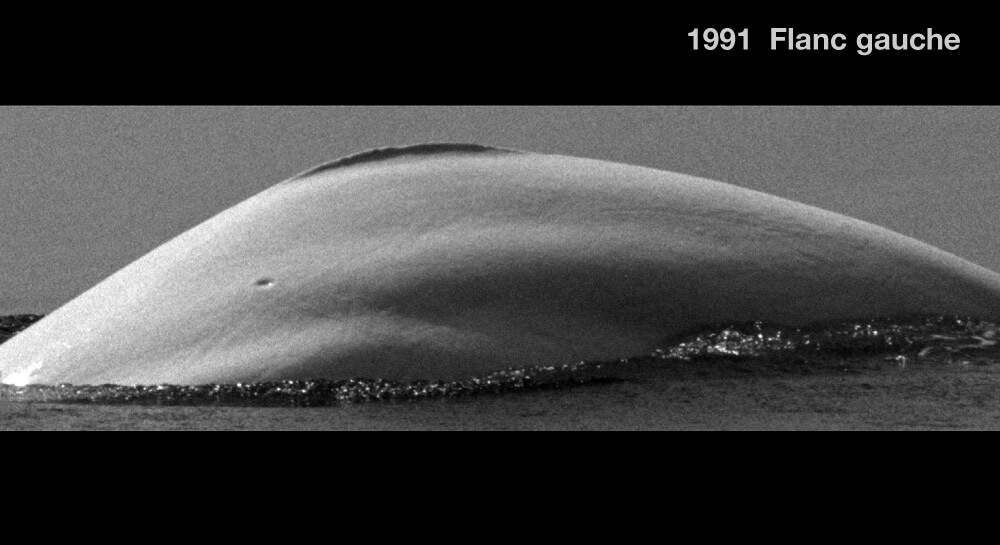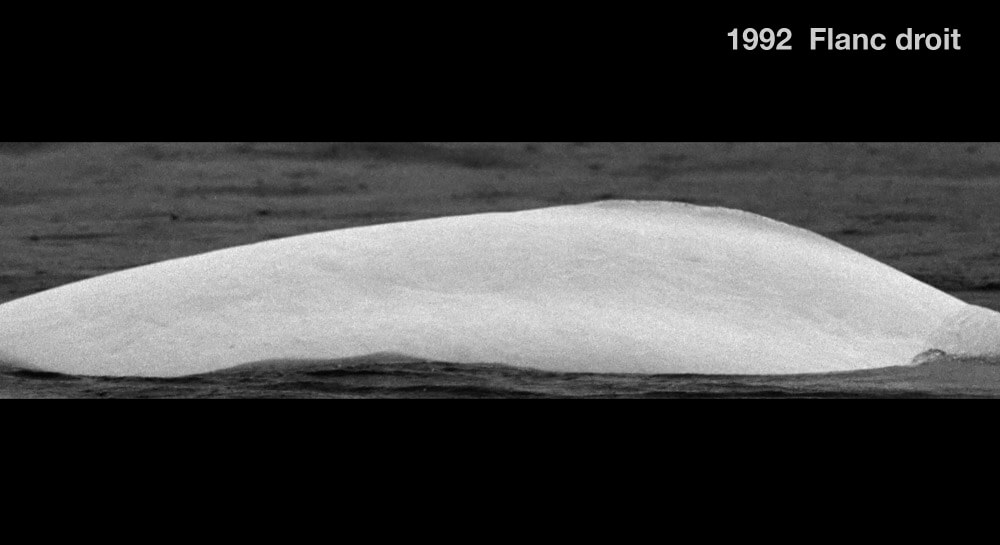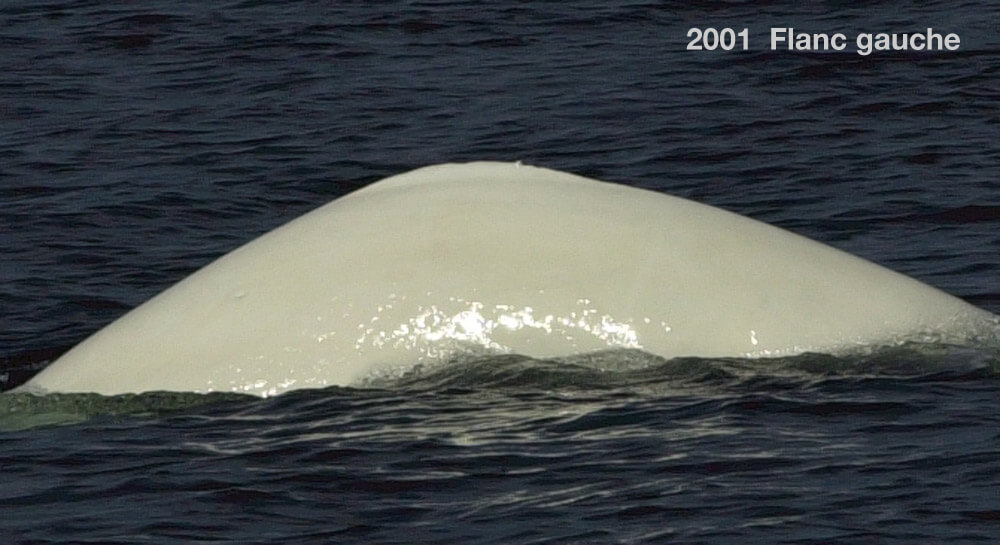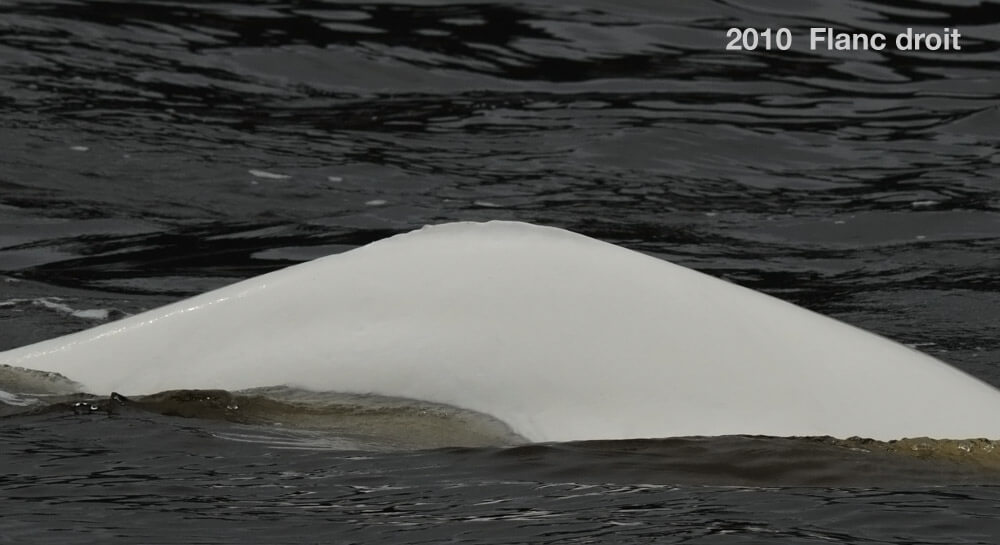Albert
Beluga

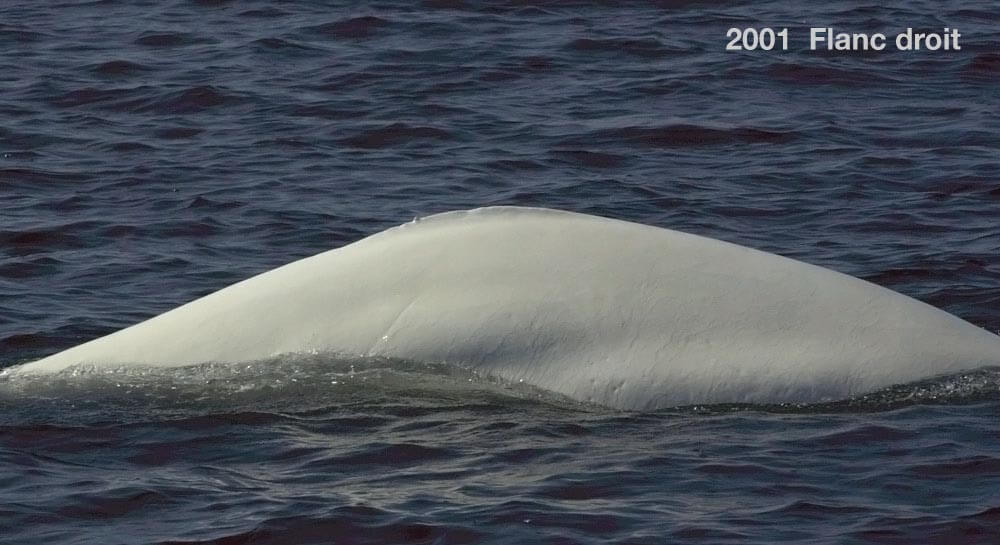
Adopted by Canadian Pacific Hotels, Alberta Region
-
ID number
DL0191
-
Sex
Male
-
Year of birth
Before 1978
-
Known Since
1990
Distinctive traits
Albert can be identified by a small, round scar on his left flank. However, the numerous notches on his dorsal ridge are enough to identify him on their own.
Life history
When we first met him in 1990, Albert was completely white. He was therefore born before 1978.
Albert is usually seen in and around the mouth of the Saguenay, and is part of one of two networks of males that frequent this area.
In the early 2000s, Albert was part of one of our team’s best-known groups of St. Lawrence belugas. We call it “La bande du Saguenay”. There are two networks of males that frequent the Saguenay fjord, its mouth and part of the estuary as far as Les Escoumins. Within these networks, males form stable bands of mates. These associations build up gradually and may play a role in the belugas’ reproductive life.
The Saguenay pod is peculiar for several reasons. It is made up of adult individuals, all presumed to be male and well identified. Some of these belugas have been observed for some twenty years. In the past, this group seemed to be the most stable of all known groups, in terms of membership composition and sites frequented. At present, however, several members of this group have disappeared or been found dead. Continued research should enable us to answer some of these questions, to better understand and protect this endangered population.
Observations history in the Estuary
Years in which the animal was not observed Years in which the animal was observed
Latest news
On September 30, 2010, Albert found himself in the middle of a herd of beluga whales traveling at high speed, all stuck together, in the Anse à la Boule area of the Saguenay. Then, young grays come to study our research boat. Curious by nature, these youngsters prevent us from continuing our work. Twik and Trèfle are recognized by adults and youngsters. At the end of the morning, we try to take a biopsy from Trèfle, but the rifle is missing and his behavior is difficult to read. We leave the herd, which is beginning to disassociate, in the ferry area under a light rain.
Sponsor
Canadian Pacific Hotels, Alberta Region, CP Regions adopted Albert (1998).

